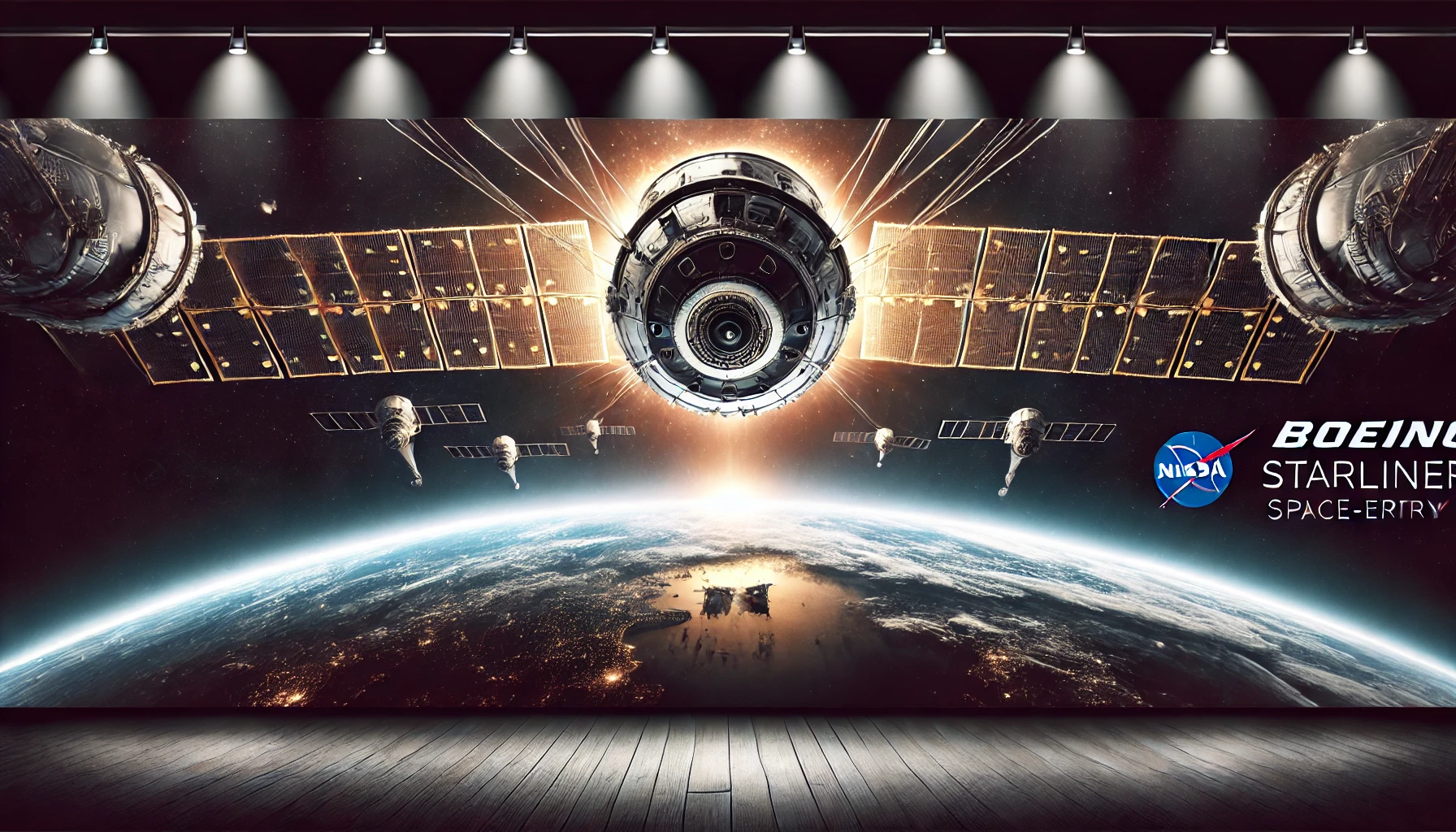Boeing Starliner Returns: What This Uncrewed Mission Means for NASA’s Future
On Friday, the Boeing Starliner spacecraft will make its return to Earth—this time, without any astronauts on board. The uncrewed return of the Starliner spacecraft marks an important step in Boeing’s collaboration with NASA, as the company works to address past issues and prepare the spacecraft for future crewed missions. Although the mission lacks human passengers, its significance in NASA’s Commercial Crew Program cannot be overstated.
In this blog post, we’ll explore the details behind Boeing Starliner’s uncrewed return, its past challenges, and what this mission means for the future of space travel.
The Boeing Starliner: NASA’s Next-Generation Spacecraft
The Boeing Starliner spacecraft is part of NASA’s Commercial Crew Program, which aims to return astronaut launches to U.S. soil after the retirement of the Space Shuttle. Boeing’s space capsule was designed to transport astronauts to the International Space Station (ISS) and other destinations in low Earth orbit. Alongside SpaceX’s Crew Dragon, NASA’s Starliner represents a new era of space travel that relies on partnerships with private companies(Phys.org).
The Boeing space capsule is a fully autonomous spacecraft capable of carrying up to seven passengers or a mix of crew and cargo. Its modular design allows for flexibility in space missions, from crewed expeditions to uncrewed cargo deliveries. Despite its promising design, the Starliner has faced significant hurdles on its path to becoming operational.
The Journey So Far: Starliner’s Mission Issues and Challenges
The development of the Starliner spacecraft has been anything but smooth. After years of delays and technical issues, the Starliner test flights have been closely scrutinized. In 2019, the spacecraft’s first uncrewed test flight, called Orbital Flight Test-1 (OFT-1), faced major problems when a timing software error caused the spacecraft to miss its planned orbit and fail to dock with the ISS(Phys.org).
This high-profile issue delayed further flights, as Boeing and NASA worked to address the Starliner mission issues. Another software glitch was discovered during post-flight analysis, leading to a complete overhaul of the spacecraft’s software systems. The challenges highlighted the complexities involved in developing a spacecraft from scratch and ensuring its readiness for human spaceflight(Space.com).
Boeing’s second uncrewed test flight, OFT-2, was successful in May 2022, with the Starliner spacecraft completing its mission to dock with the ISS. This marked a turning point, showing that Boeing had addressed the previous issues. However, the latest mission represents a critical uncrewed Starliner return designed to test the spacecraft’s durability and readiness for future crewed missions.
Why is the Starliner Returning Without Astronauts?
The current mission is a demonstration of the Boeing Starliner’s capabilities in preparation for future astronaut flights. Despite earlier plans to have a crewed return mission, NASA and Boeing decided that an uncrewed Starliner return date would allow them to focus on testing the spacecraft’s systems under real conditions. This decision is part of the ongoing process to certify the spacecraft for regular crewed missions to the ISS(Phys.org).
While the spacecraft successfully completed its docking with the ISS during its most recent mission, it must now prove its ability to return safely to Earth. The uncrewed Starliner return will test the spacecraft’s heat shield, parachute deployment system, and overall re-entry performance. These tests are critical for ensuring astronaut safety on future missions.
The Starliner’s Re-Entry: What to Expect
As the Starliner spacecraft begins its descent, the mission team will monitor a variety of systems to ensure a safe and smooth re-entry. The spacecraft is designed to withstand the intense heat and friction of re-entering Earth’s atmosphere, with a heat shield protecting it from temperatures exceeding 3,000 degrees Fahrenheit. The Starliner re-entry will take place over a precise landing zone, with parachutes deployed to slow its descent(Phys.org).
Once the spacecraft re-enters the atmosphere, it will rely on a combination of airbags and thrusters to cushion the landing. Boeing’s engineers have spent years perfecting this system, ensuring that it can safely carry astronauts back to Earth in future missions. A successful uncrewed re-entry will demonstrate the spacecraft’s readiness for human flight.
The Future of the NASA-Boeing Partnership
The uncrewed return of the Boeing Starliner comes at a critical time for NASA’s Commercial Crew Program. With SpaceX’s Crew Dragon already operational, Boeing has faced pressure to bring its spacecraft to the same level of readiness. NASA is counting on the Boeing space capsule to provide a second option for sending astronauts to the ISS, ensuring that the U.S. maintains its independence in human spaceflight(Space.com).
Despite the delays and technical issues, NASA remains confident that the Starliner spacecraft will soon be ready for crewed missions. The upcoming missions will include test flights with NASA astronauts aboard, followed by regular operational missions to the ISS. Boeing’s successful completion of these missions will solidify its role as a key player in the future of American space travel.
A Pivotal Moment for Boeing and NASA
As the Boeing Starliner prepares for its uncrewed return, this mission marks a critical milestone for both Boeing and NASA. The challenges the spacecraft has faced—ranging from software errors to mission delays—highlight the complexities of developing next-generation spacecraft. However, with each successful test, Boeing is closer to delivering a spacecraft that will carry astronauts to the ISS and beyond.
The success of this mission is essential for NASA’s vision of a multi-partner approach to space travel, with both Starliner and Crew Dragon providing safe, reliable transportation for astronauts. As Boeing prepares for its final test flights, the lessons learned from this mission will help ensure the spacecraft’s future success.
For more information on space exploration and NASA’s partnerships, visit Regent Studies.
To learn more about Boeing’s Starliner program, check out NASA’s Commercial Crew Program page.




